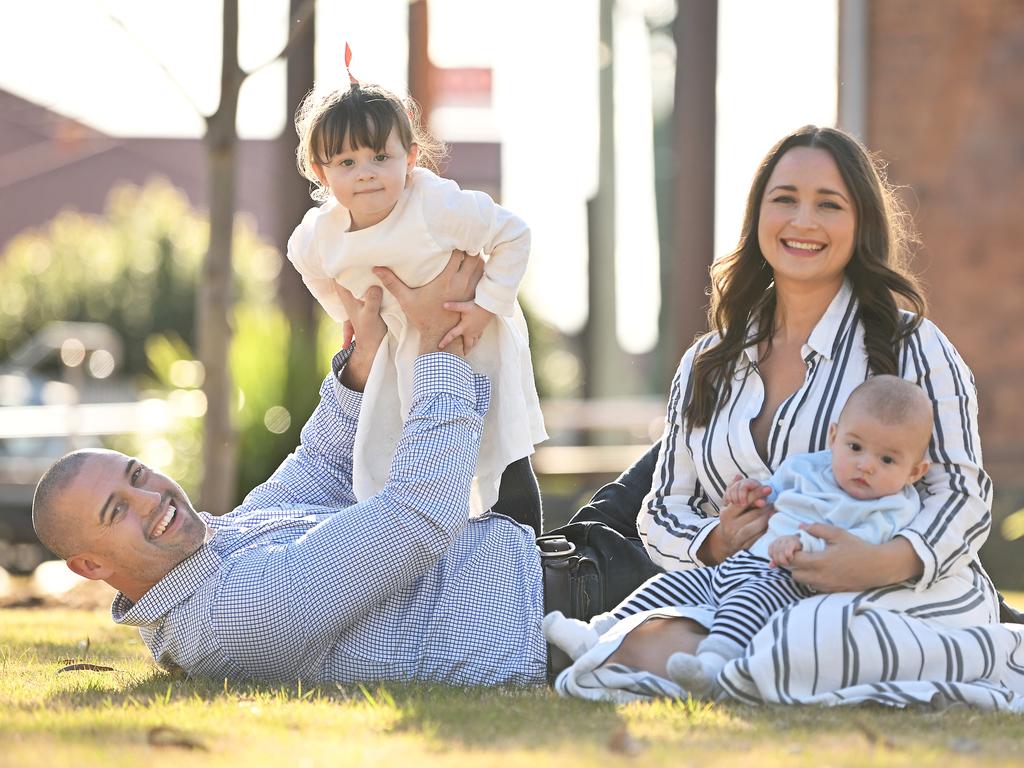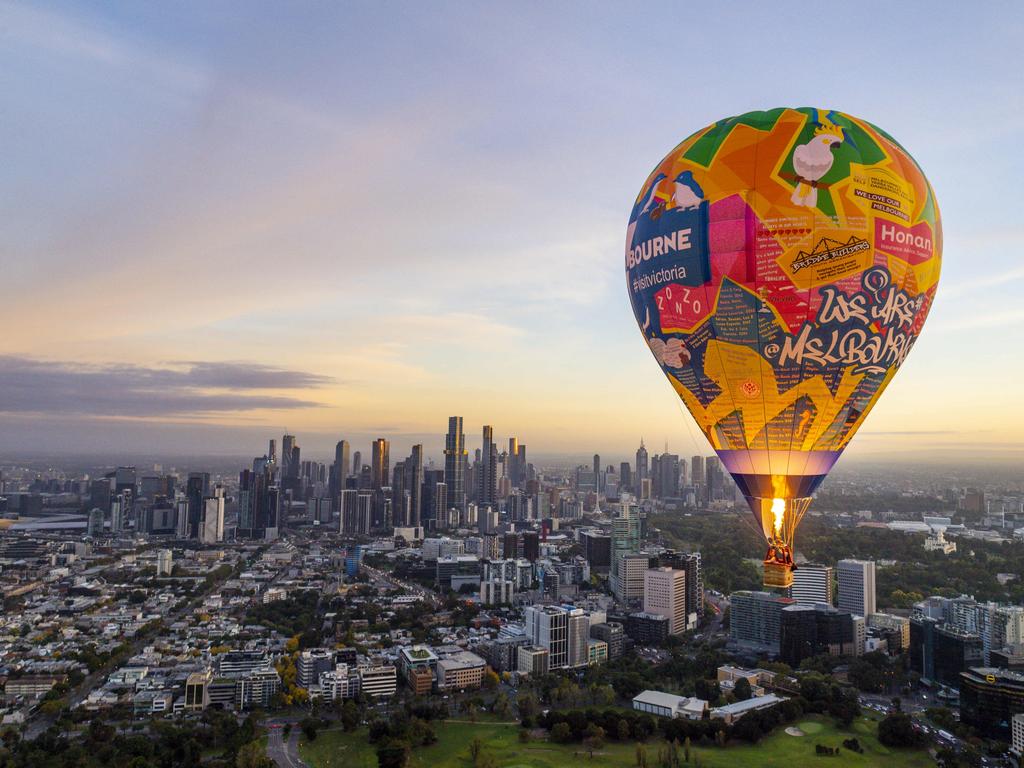Census 2022: a matter of faith in the numbers
The rise of no religion revealed by the census has been in train for years. But this grand diminution in faith doesn’t apply to all belief systems — or even to all branches of Christianity.

It has been one of the most commented upon findings of the new census data released less than two weeks ago. It is the rise of the “no religion” response to the question about religious affiliation.
Between the 2016 and 2021 censuses “no religion” jumped from 30 per cent of the Australian population to 39 per cent, while Christianity contracted from 52 per cent to 44 per cent.
Is this a direct response to the findings of the Royal Commission into Institutional Responses to Child Sexual Abuse? Is this conclusive evidence of a structural shift in our core values?
In fact the data suggests another interpretation. The number of people counted by the census increased by two million across the five years to last year. However, the number responding to the question about religious affiliation jumped 2.4 million. The two million figure reflects net growth through natural increase and net overseas migration (including growth in student numbers).
But the net extra 400,000 responding to the question on religious affiliation suggests something different. It suggests that for several censuses there has been a growing cohort who simply ignored the religion question. But by last year this cohort had been galvanised into action – perhaps because of the issues cited above – and responded to the question by ticking the no-religion box.
In other words, many of the 2021 no-religion box-tickers simply were unengaged by this question previously. Christianity hasn’t recently plunged; it probably has been in incremental decline for decades but that decline was not captured by the census accurately until last year.
However, the fact is that this grand diminution in belief doesn’t apply to all belief systems or to all branches of Christianity. Indeed followers of Islam, Hinduism and Sikhism all jumped by between 35 and 67 per cent across the five years to last year, a period in which the Australian population increased by 10 per cent. These faiths are growing rapidly (off small bases) and mostly as a consequence of immigration (and foreign student growth).
All the main branches of Christianity lost followers (devotees?) across the five years to last year but this downshift ranged from a mere 4 per cent reduction for Catholic to a whopping 23 per cent reduction for Presbyterian. A 20 per cent reduction in the Anglican population equates to a net loss of 604,000 followers across five years.

The sharpest (percentage) falls in followers were in two faiths scattered throughout the Australian continent. Toss in losses among the Catholic and other Christian communities and there’s roughly a million people deciding to say no religion or finally crystallising their non-alignment with any faith via this census question.
My inclination is that we’re probably closer to the truth about religious affiliation in Australia in this census than in any of the past, say, four censuses.
Religious affiliation is generally ascribed to people of all ages in a household. Later this year the Australian Bureau of Statistics will release religious affiliation data by single year of age. I have examined this data at the past two censuses.
What emerges is a rollercoaster showing that Australians are most likely to believe in a god of some sort at age 16 (perhaps influenced by parents) but that by age 23 belief plummets.
Australians are “immortal” at the age of 23. However thereafter, perhaps as grandparents die, as children arrive, a different world view takes hold. Traditionally Australians increase their belief factor as they raise families and progress through the life cycle. The most devout Australians are aged 80 and older.
Maybe this reflects traditional values, exposure to tougher times – the trailing effects of war and Depression – making today’s frail elderly our most ardent believers. Then again, maybe heightened religious affiliation is a kind of insurance policy: the closer you get to God, the closer you get to God.
The 2021 belief line will fall below the 2016 line but it will surely follow the same broad track across the life cycle.
Judging by an analysis of where non-believers popped up in 2021 the national uptick in no religion comprised a skimming, perhaps a few percentage points skimmed off the broad base of middle Australia. I think the pandemic, the royal commission, generational change (millennials passing into their 30s) prompted many finally to engage with this question and call it for no religion.
This isn’t a sharp descent (or ascent) into godlessness: it is simply a more accurate reading of a shifting state of belief in Australia that has been in train for 20 years or more.
Nevertheless, even with a million or so Christians finally choosing last year to tick the no-religion box, Australia is still a nation of believers. The fastest rising belief systems are underpinned by migrants, and they cluster in capital cities.

Islam, for example, peaks at 61 per cent of the population in Sydney’s Lakemba. Judaism peaks at 42 per cent of the population in Melbourne’s Caulfield. Christianity accounts for 85 per cent of the population in the Indigenous community of Yarrabah near Cairns. No-religion respondents peak at 79 per cent of the population in Chidlow east of Perth.
Even with this census, Christians (about 11 million) outnumber the no-religion cohort (about 10 million). And that’s before adding back 2.5 million adhering to non-Christian belief systems.
And so despite what I think has been something of a truth-telling census, Australian believers still outnumber non-believers. It’s just that the grand Anglican-Presbyterian-Catholic orthodoxy that has shaped so many of our communities for so long has slipped. Together with data scientist Hari Hara Priya Kannan, I have mapped the suburbs and regions of Australia on the predominance of belief or non-belief.
At a national level Australia is shown to have what I call a Faith Frontier (or a god line) separating the (Mediterranean) immigrant-influenced east from the largely Anglican and UK-immigrant shaped west. The Faith Line divides Australia paradoxically in the opposite direction to the mythical Brisbane Line of 1942. I suspect the Faith Line is creeping ever eastwards.
The top spots for believers and non-believers in each state reveal the drivers of religious affiliation. In NSW, for example, the most devout community is a largely Christian (immigrant) community in western Sydney’s Bossley Park where 86 per cent of the population are believers. NSW’s non-believers, on the other hand, peak at 74 per cent of the population at Mullumbimby (near Byron Bay).
I have always thought that bishops should have a weighting system to evaluate the performance of priests and ministers. Clearly in terms of ministering to the spiritual needs of the community, Mullumbimby is a tougher gig than is Bossley Park. Getting anyone into a Mullumbimby church is a good effort.
There’s a different story in Victoria, where non-believers congregate in the goldfields town of Castlemaine (73 per cent), whereas believers cluster in northern Melbourne’s Roxburgh Park (88 per cent). Castlemaine is to Victoria what Mullumbimby is to NSW except it is much closer to the state’s capital. Castlemaine’s non-believers are connected to Roxburgh Park’s believers by about 100km of the Calder Freeway, which perhaps could be renamed Victoria’s Road to Damascus: salvation may be found along the road to Roxburgh Park. Whoever said demographics is boring!
The mapping of believers versus non-believers at a capital city level reveals an important social schism that is separating the inner city from middle and outer-suburban Australia. In Melbourne, for example, non-believers dominate the inner city between Williamstown, Northcote and St Kilda. In Sydney, the inner city’s non-believer stronghold extends from North Sydney through Sydney City to Mascot.
The Faith Frontier that is so evident at a continent level also applies within our biggest cities. Indeed our biggest cities’ core is dominated by non-believers; the fault line separating the belief tectonic plates has been called the Latte Line, the Goat’s Cheese Curtain and now the Faith Line.
This line, this separation of Australian communities with fundamentally different belief systems, is something that is also evident in other indicators such as income, mortgage, households with children, ownership of a car. Voting patterns also are shaped by matters of faith.
So there you have it. I don’t think there has been a sudden shift in Australian values; the shift revealed by the census is a cultural and demographic truth that has been in train for some time.
However, it does prompt some interesting questions. For example with many Christian congregations contracting (but not in Roxburgh Park or in Bossley Park), is there scope to consolidate and share infrastructure such as church buildings?
Maybe the contracting Christians could get together, create a single ecumenical church facility, share costs, agree on a suitably adaptable interior insignia, sell off underused assets, and run services more or less back-to-back on a Sunday.
Perhaps this wouldn’t work in the suburbs but I’m sure there’s a market for this kind of thinking in rural, regional and remote Australia. That’s the benefit of the census. It prompts bigger thinking about the efficient use of infrastructure. Plus, some aspects of the census are simply great fun.
Bernard Salt is founder and executive director of The Demographics Group; research and graphics by data scientist Hari Hara Priya Kannan.








To join the conversation, please log in. Don't have an account? Register
Join the conversation, you are commenting as Logout